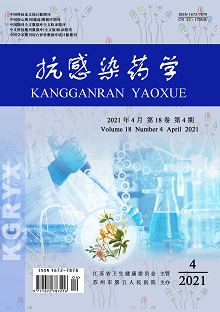PAN Qiao-na, HAN Qiang, WU Guang, ZHU Wan-qing
Objective: To explore the application efficiency of clinical pharmacists in the medication of patients with unstable angina pectoris (UAP) based on the clinical pathway of unstable angina pectoris (2009 edition) embedded pharmaceutical care, and to provide reference for the formulation of UAP pharmaceutical care pathway. Methods: A total of 100 patients with UAP admitted to the cardiovascular department of the hospital from January to May 2020 were selected and divided into the pharmaceutical intervention group (n=50) and the conventional intervention group (n=50). The conventional intervention group received conventional monitoring and treatment, while the pharmaceutical intervention group received pharmaceutical monitoring pathway intervention on the basis of conventional monitoring and treatment. The efficiency of different intervention methods on the clinical pathway (length of stay, incidence of adverse reactions, improvement degree of biochemical indicators, disease outcome, etc.) were compared and analyzed between the two groups. Results: After different intervention, the average hospitalization time of patients in pharmaceutical intervention group was (6.66±1.86) d shorter than that in conventional intervention group (7.28±2.51) d (P<0.05), and the incidence of ADRs was lower than that in conventional intervention group (16.00% vs 42.00%, P<0.05). Through the clinical pathway of pharmaceutical care, combined with UAP treatment "Guide", "The expert consensus", Journal of clinical pathway, and related pharmaceutical professional knowledge, formulated the executable flow chart of the unstable angina pharmaceutical guardianship and unstable angina pharmaceutical care path form, standardizes the UAP patients with pharmaceutical care path. Conclusion: Through the pharmaceutical care of the clinical pathway of UAP patients, the incidence of ADRs during hospitalization was effectively decreased, the length of hospital stay of patients was reduced, and the standardized monitoring mode for pharmaceutical care of UAP patients was provided to ensure the safety and effectiveness of medication for patients.
